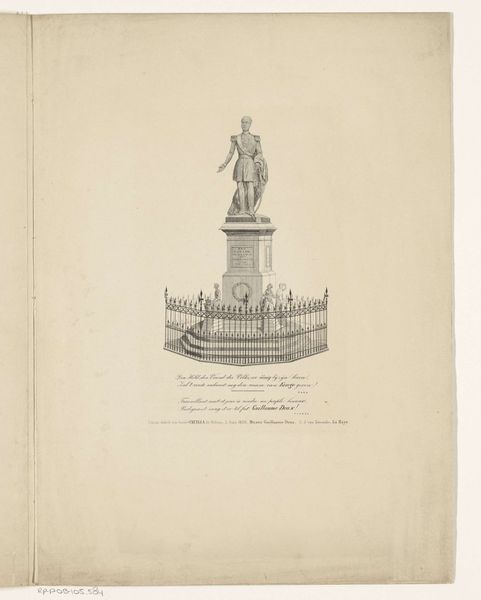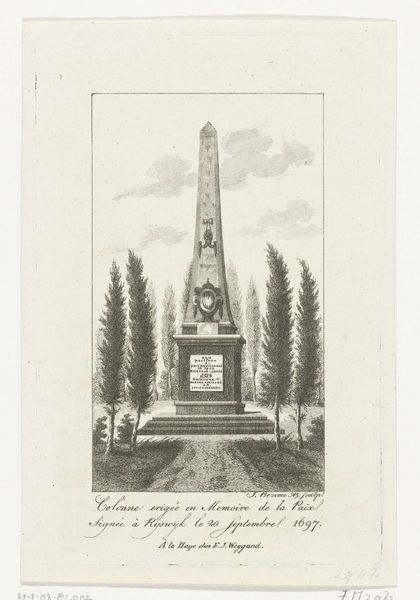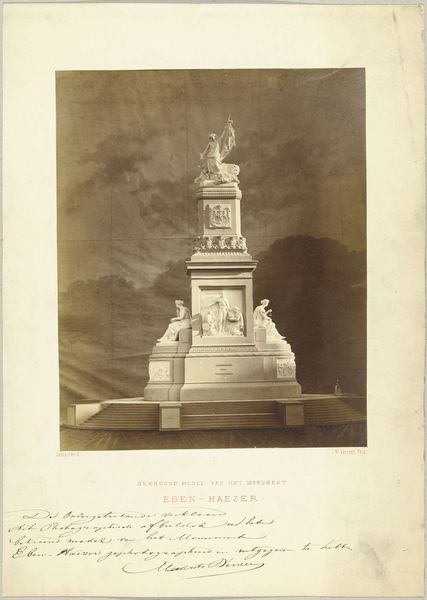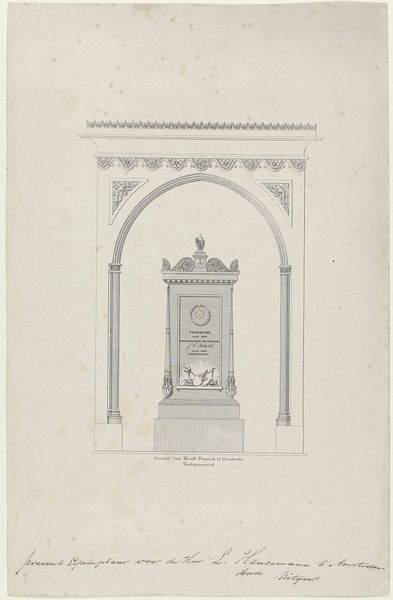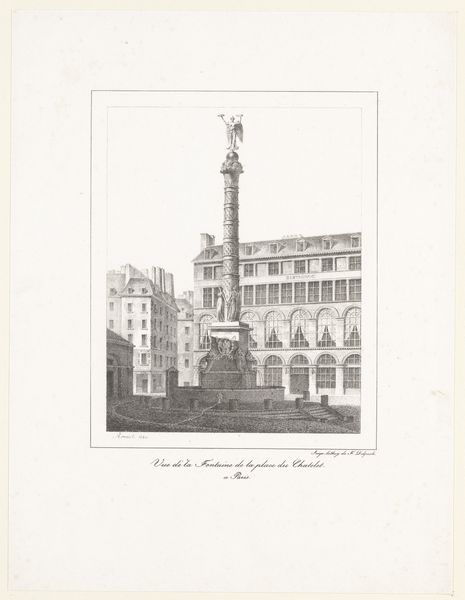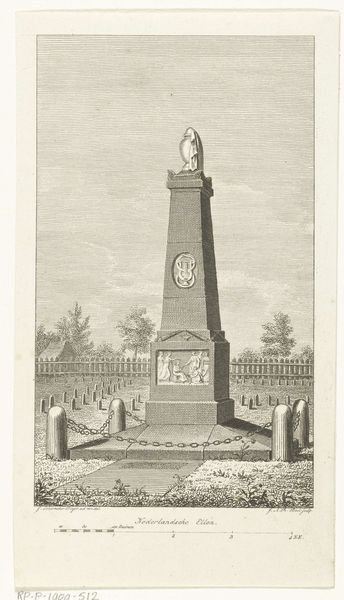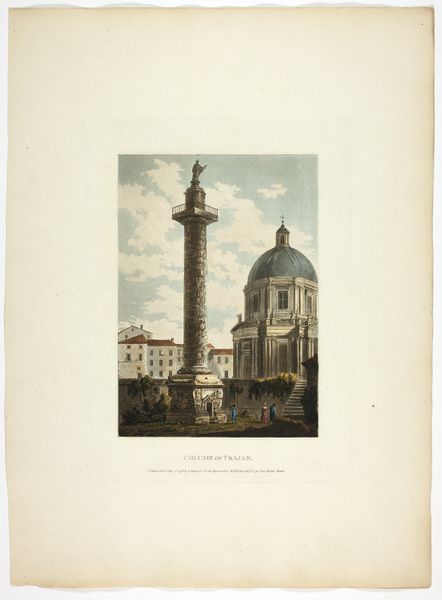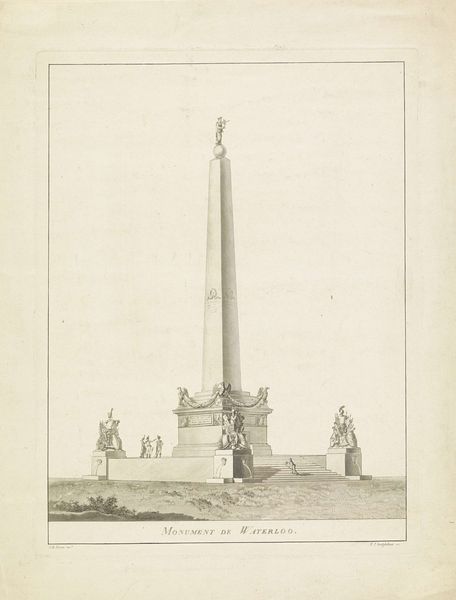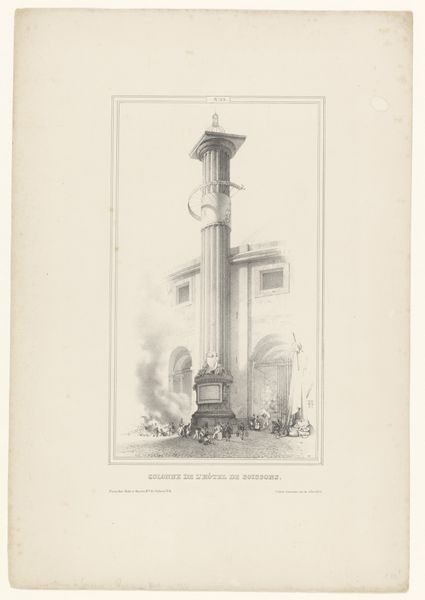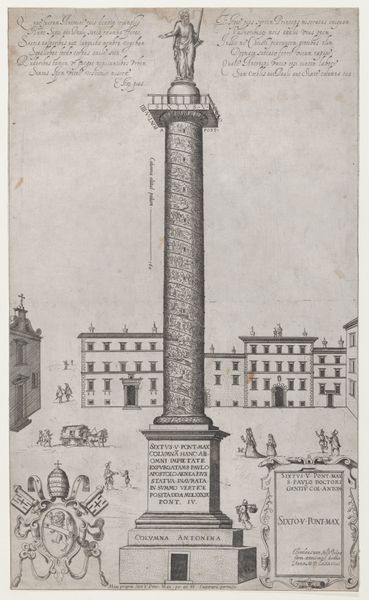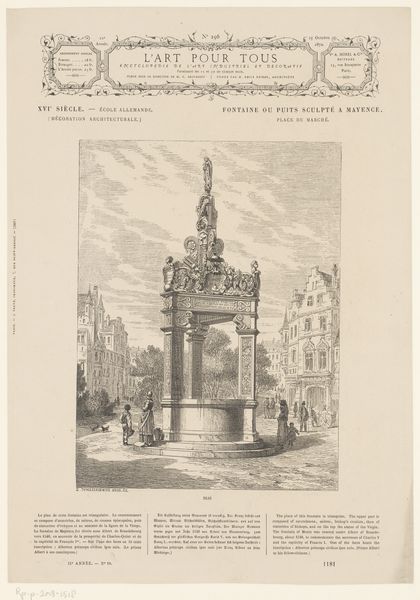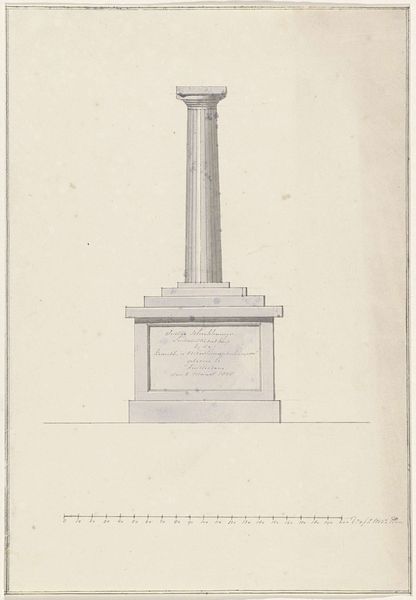
print, engraving, architecture
#
neoclacissism
#
statue
# print
#
old engraving style
#
landscape
#
cityscape
#
engraving
#
architecture
Dimensions: height 422 mm, width 338 mm
Copyright: Rijks Museum: Open Domain
Curator: I'm immediately struck by the scale. That vast open square dwarfed by imposing neoclassical architecture—it exudes power, doesn’t it? Editor: Indeed. And it's very typical of its time. This is a print entitled "Monument voor Alexander I, tsaar van Rusland." It dates to between 1818 and 1858, attributed to Dirk Wijbrand Tollenaar. We are looking at an engraving here at the Rijksmuseum. Curator: The cityscape seems so precisely rendered, capturing a formal grandeur, yet the sky almost gives an ethereal or visionary touch to the composition. Are those rays of light divine favor, perhaps? Editor: Quite possibly! Note the placement of the figure atop the column. Monuments often serve to anchor cultural memory; they aren't simply stone, they communicate lasting messages. The monument immortalizes Tsar Alexander. The inscription repeats "To Alexander I" in three languages, further solidifying that. Curator: And the chosen neoclassical style with its symmetry and emphasis on order... it consciously recalls the Roman Empire. It visually asserts the Tsar’s power as legitimate, timeless, even ordained. The building follows the exactingly-repeated geometry of rationalist architecture that evokes, visually, enlightened rule and a civilizing empire. Editor: That’s astute. Consider too, the symbolic language used. Alexander standing tall on the column symbolizes leadership, strength. Think about the choice of this type of public art: how empires or dominant powers seek permanence in material things in an effort to solidify cultural norms through public architecture. Curator: It also tells a story about cultural influence and exchange, doesn't it? We see how quickly Neoclassicism takes root across Europe, a visual manifestation of intellectual currents in that period. Editor: Yes, tracing how architectural styles move reveals complex cultural relationships. Seeing them expressed here is an insight. Curator: Indeed. Examining the artistic structure alongside cultural intentions reminds us how artists distill broader ideological systems in their works. Editor: Agreed. The print is so much more than just a depiction; it is also a testament of ideology etched in time.
Comments
No comments
Be the first to comment and join the conversation on the ultimate creative platform.
